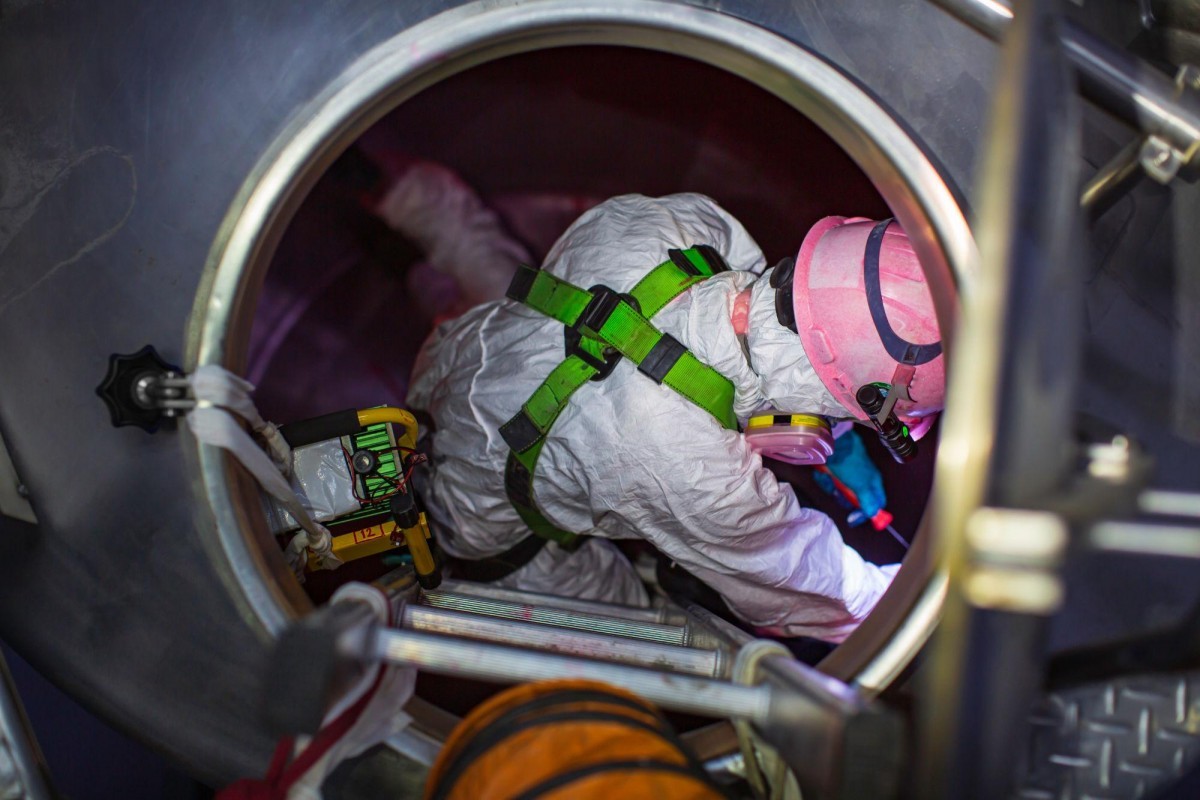The chemical industry is characterised by a wide variety of production processes and other activities associated with the storage and transportation of raw materials, as well as finished products. The abundance of substances and chemicals used, their aggressiveness and their impact on corrosion pose extremely difficult challenges for tank engineers.
In the broader chemical industry, applications include both non-pressure vessels (storage tanks, pallet containers and other transport vessels) and pressure vessels (chemical reactors, autoclaves, advanced process line tanks). For both groups of tanks, an inspection manway is used for inspection purposes.

The inspection manway in a chemical tank usually performs several functions – the primary ones include:
The basic form of manway division in the context of the chemical industry is the distinction between non-pressure and pressure manways. The first group (non-pressure manways) usually includes standard tank top covers, whose pressure resistance does not exceed 0.5 bar. The category of pressure manways, on the other hand, includes models with a more complex design, heavier construction and pressure resistance of up to 12 bar.
Non-pressure manways for the chemical industry primarily include round manways with diameters ranging from DN150 to even DN1500 (however, oval and rectangular models of various sizes are also available). The main task of this type of manway is to cover the inspection opening of the tank, in which there is no working pressure. Nevertheless, the manway must have adequate resistance to the temperature and chemical properties of the medium in the tank.
Thus, an appropriate selection becomes necessary:
A much more demanding group of manways are pressure chemical manways. Their use in various types of reactors, autoclaves and advanced production lines for paints, varnishes, plastics or petrochemicals is invaluable. The most common type of pressure manway for the chemical industry includes round manways. Unlike standard non-pressure manways, these are characterised by heavier construction (thicker cover and frame wall) and a higher number of handwheels, which is related to the overall pressure resistance of a particular model.
The second group of pressure manways are oval manways. While pressure round manways are usually installed in the top of the tank (roof), the predominant place for oval manways is in the side shell. Manways of this type are usually used in larger tanks and reactors, the interior of which requires an access point at the bottom (closer to the bottom head) of the tank in question.
Stainless steel is generally the predominant material of construction for tank manways. This is primarily due to the versatile nature of stainless steel – as stainless manways are used in both hygienic and non-hygienic applications. In addition, the vast majority of manway models can be made of stainless steel grade:
AISI 304 or AISI 304L (the most common grades used in most applications),
AISI 316 or AISI 316L (grades with slightly higher chemical and temperature resistance compared to AISI 304/304L).
Some manways, by special arrangement, are also manufactured from higher grade materials, such as AISI 316Ti or AISI 321 acid-resistant steels. Stainless steel manways are durable and corrosion-resistant, making them ideal for use in harsh environments. In addition, the stainless surface can be polished or electropolished, which is particularly important in the case of manways for applications where an exceptionally high hygienic standard of the equipment used is required.
Some applications allow the installation of manways made of mild steel (for example, grade S235JR). The use of a mild steel manway is often motivated by the design of the target tank, which is also made of the same or similar material. However, it should be borne in mind that usually the chemical resistance of a mild steel manway is significantly lower than that of a stainless steel one. In addition, stainless steel manways often prove to be a cheaper, better quality and more readily available option.
The chemical industry and all its branches often require customised solutions. For some models, it is possible to make individual design changes to the manways. Modifications of this type may include:
the overall design of the manway, wall thickness, frame height or material,
the method of closing and additional elements associated with it (for example, locking the manway with a padlock),
additional equipment, such as sight glasses, gratings to protect the opening clearance and many others.
We use cookies